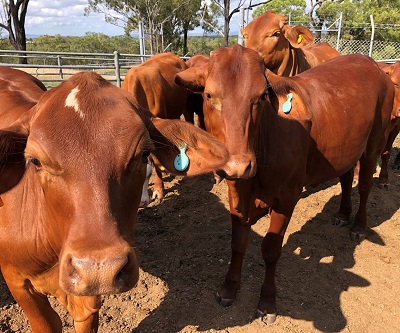



Agtech expert recommends sensor focus for government's biosecurity strategy
A leading agriculture expert from CQUniversity Australia has urged government not to ignore digital technologies in their budget commitment to national biosecurity initiatives.The University has been working with industry for more than five years to research technological solutions to manage livestock disease and welfare risks; and as part of the Precision Livestock Management Group researchers are exploring the potential for on-animal sensor systems (smart ear tags) to provide early warning of disease incursions.
Speaking at the recent International Committee for Animal Recording Conference, Associate Professor Mark Trotter outlined how new technologies could be integrated with existing traceability platforms to provide valuable insights into animal behaviour that might be linked to disease incursions.
“These emerging sensor systems provide data on the location and movement of animals remotely via radio link, wherever they are in a paddock.
“We can take this raw data and turn it into key indicators of behaviours which may indicate a disease has taken hold,” said Dr Trotter.
“For example, accelerometer sensors on an ear tag can be used to detect rumination, or “chewing the cud” an activity that cows do for about a third of the day if they are healthy. If rumination patterns start to change, we know that something is wrong.
“GPS data can also provide clues to disease state and combining both GPS and accelerometer data is a very powerful predictor of animal health.
“This is important because we have large areas under livestock production, particularly in Northern Australia where its almost impossible for a manager or biosecurity agent to monitor animals regularly enough to quickly detect disease outbreaks within herds”.
As part of this research, CQUniversity has also been working with New Mexico State University (USA) to develop the algorithms that take the raw data from sensors and provide a remote alert to disease onset.
In recently published research undertaken at Rockhampton during a Fulbright funded scholarship visit to Australia, Professor Derek Bailey (New Mexico State University) demonstrated how sensors can be used to detect a key industry disease, Bovine Ephemeral Fever, or three-day-sickness as it is more commonly known.
“If COVID-19 has taught us anything, it’s that the early detection and containment of disease outbreaks is critical,” Dr Trotter said.
“There is a real opportunity to leverage the developments in digital technologies to enable faster detection and response times to key emergency diseases such as Foot and Mouth. However, we still have some further research and development to do before we can see a practical solution deployed across the industry.”
CQUniversity’s Precision Livestock Management Group is involved in testing and evaluating the emerging smart tag technologies as well as developing the behavioural algorithms that turn vast amounts of data into useful information for animal managers.
“What’s needed is funding to establish a program that brings together a collaborative group of key players including government, industry agencies, researchers and technology developers, with a focus on getting these systems working in the remote areas of regional Australia.
“As a priority, a proportion of the funding announced in the budget should be committed to trialling the use of on-animal sensor systems to monitor the disease status of livestock, and the potential incursion response benefits that might be achieved across Northern Australia.
“Some of the biggest biosecurity risks concern Northern Australia and these emerging technologies can have the most benefit in these situations,” said Dr Trotter.


